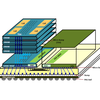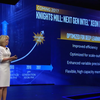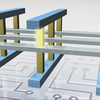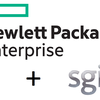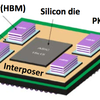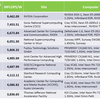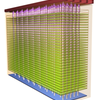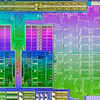At the Hot Chips symposium taking place in Cupertino, California this week, Samsung and SK hynix touted their latest efforts for high bandwidth memory (HBM), including the third iteration of the technology, known as HBM3. This new version promises to double bandwidth and density, while taking more direct aim at the high performance computing market.
At the Intel Developer Forum (IDF) this week in San Francisco, Intel revealed it is working on a new Xeon Phi processor aimed at deep learning applications. Diane Bryant, executive VP and GM of Intel's Data Center Group, unveiled the new chip, known as Knights Mill, during her IDF keynote address on Wednesday.
The prospects for significantly faster solid-state storage for serversgot a big boost this past week with Microns introduction of its QuantX-branded 3D XPoint memory-based SSDs and Samsungs preview of its upcoming Z-SSD devices. According to the companies, their respective products will deliver much better performance than conventional NAND-based PCIe SSDs currently used in the datacenter. The announcements were made at the Flash Memory Summit, a three-day extravaganza of all things non-volatile.
HPE has signed an agreement to acquire SGI for $275 million, a deal that will bring together two of the top HPC system vendors under a single corporate master. Assuming the bid clears regulatory hurdles, the acquisition will represent the largest realignment of the HPC server space since IBM sold its x86 server business to Lenovo in 2014.
On Tuesday, Intel CEO Diane Bryant revealed her company was acquiring Nervana Systems, a startup that provides deep learning software, and which was in the process of building a custom chip optimized for those same applications. Intel has been ratcheting up its focus on AI over the past couple of months, starting with the launch of its Knights Corner Xeon Phi processor at the ISC conference in June.
The 19th edition of the Green500 was released today with the usual array of accelerated systems at the top of the list and a plethora of energy-sipping x86 clusters comprising the remainder. For the most part though, energy efficiency gains slowed over the past 12 months after chalking up some pretty impressive gains in previous years.
A new report put out by a consortium of semiconductor industry groups is predicting that Moores Law will be renewed in the next decade by transitioning from CMOS technology to something called 3D Power Scaling. The transition will rely on developing a new breed of low-power transistors that can be manufactured into three-dimensional structures. According to the report, the technology could even accelerate the cadence of Moores Law beyond its nominal 2x-per-2-year rhythm.
AMD has flirted with the idea of building big brawny APUs for servers ever since the company starting developing the CPU-GPU hybrid chips begin back in 2006. Combining x86 and Radeon silicon on the same die for desktops and laptops was the basis for AMDs original Fusion processor, later renamed as the Accelerated Processing Unit (APU). Now with the anticipation of the next-generation Zen CPU core and the future Vega GPU, it looks like a high-performance server APU could finally become a reality.
Network latency and bandwidth often turn out to be choke points on application performance for many HPC codes. As a result, the network component for HPC systems has successfully resisted the trend toward general-purpose solutions, Ethernet notwithstanding. Such an environment is conducive to greater innovation and experimentation, as is exemplified in EXTOLLs network technology
More than a hundred high-profile leaders from Silicon Valley and the broader IT community have published an open letter warning voters that a Donald Trump presidency would be a catastrophefor American technology leadership. The letter was signed by 145 inventors, entrepreneurs, engineers, investors, researchers, and business leaders working in the US technology sector.
